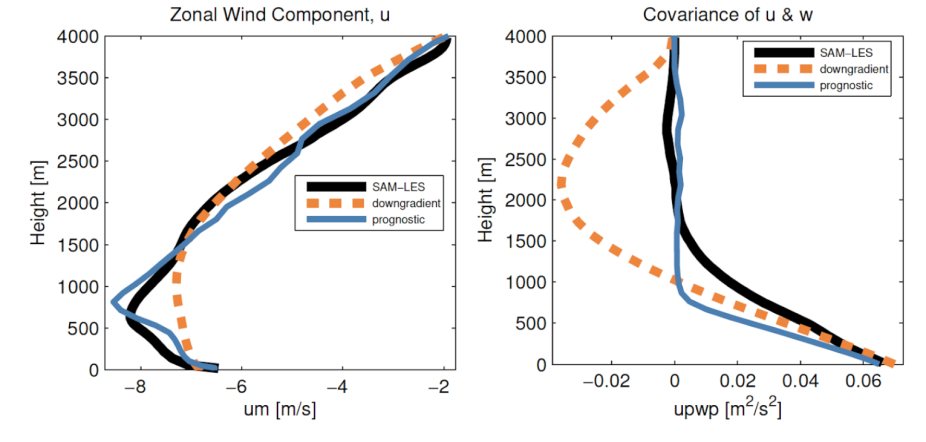CLUBB Momentum Transport
Funded NOAA/NSF Climate Process Team effort
The parameterizations of momentum flux in current-generation climate models are crude. Often momentum parameterization suites consists of downgradient diffusion plus a separate cumulus momentum transport scheme. However, the presence of a near-surface jet in the wind profile can sometimes lead to upgradient momentum flux at the top of the jet maximum, even when deep convection is not present. Furthermore, the need to model the complex diurnal evolution of winds in LLJs is difficult when the task of simulating momentum is divided between separate parameterizations.
This project proposes to parameterize momentum transport by prognosing subgrid momentum fluxes directly using the Cloud-Layers Unified by Binormals framework (CLUBB; Golaz et al. 2002). This approach is quite different from conventional approaches, but it adheres more closely to the governing dynamical equations, and hence is more flexible and general. For instance, it is capable of predicting upgradient momentum fluxes.
In this project, the process of momentum transport will be examined using a comprehensive hierarchy of observations and models. Based on these studies and improved understanding, prognostic equations for momentum fluxes will be refined and tested. The equations will be implemented into two leading climate models, one from GFDL and the other from NCAR. The resulting simulations will be evaluated against observations.
Golaz, J.-C., V. E. Larson, and W. R. Cotton (2002), A PDF-based model for boundary layer clouds. Part I: Method and model description, Journal of the Atmospheric Sciences, 59(24), 3540–3551, Doi: 10.1175/1520-0469(2002)059<3540:APBMFB>2.0.CO;2

Figure: Profiles of eastward wind, u, and turbulent flux, u’w’, for the RICOshallow cumulus case (van Zanten et al. 2011). The black line denotes a benchmark large-eddy simulation; the orange and blue lines denote downgradient and prognostic single-column parameterizations of momentum flux, respectively. The downgradient parameterization distorts both the turbulent flux and mean wind in an attempt to represent the upgradient flux above the jet maximum